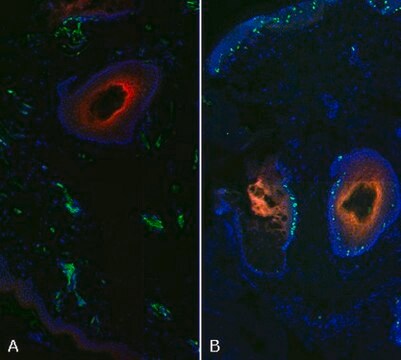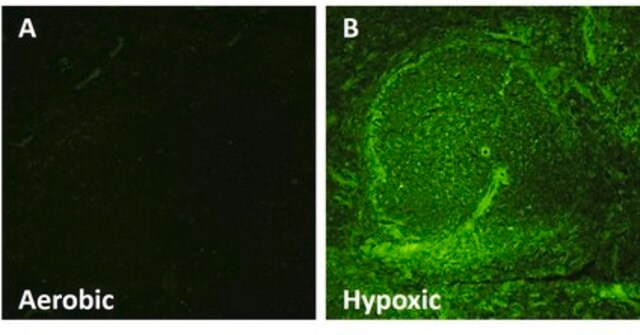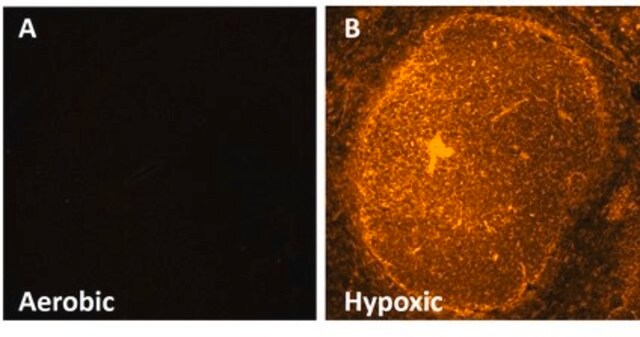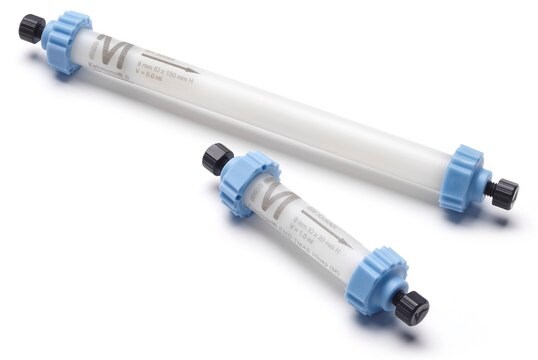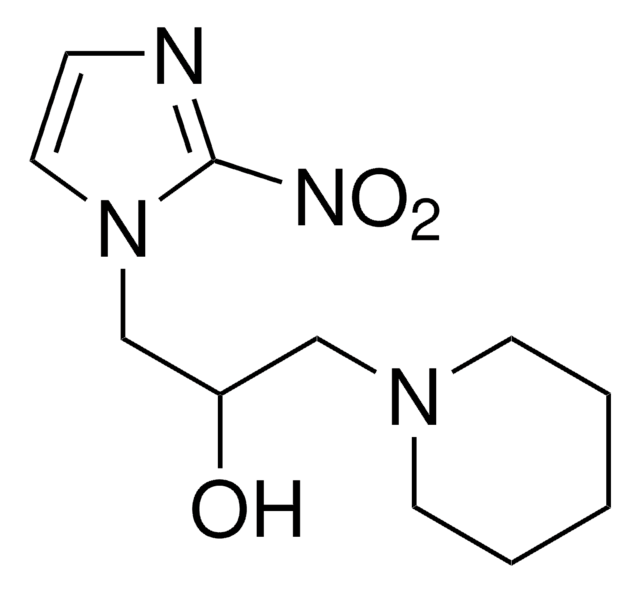EF5-30C3M
EF5 Hypoxia Detection Kit, Cyanine 3
Synonym(e):
Antibody-based EF5 detection
About This Item
Empfohlene Produkte
Methode(n)
immunofluorescence: suitable
immunohistochemistry: suitable
Qualitätsniveau
Nachweisverfahren
fluorometric
Allgemeine Beschreibung
Advantages of the EF5 Hypoxia Detection Kit:
• EF5 exists in only one form:
Pimidozole, an alternative hypoxia marker, exists in two forms; one of which is charged and very hydrophilic, the other lipophilic. Pimidozole thus has a very complex biodistribution. In contrast, EF5 is lipophilic and uncharged and this allows very rapid and even tissue distribution.
• EF5 binding images can be calibrated to provide quantitative data on the pO2 values of each cell (Koch CJ, 2002):
The fluorescent images obtained from EF5 binding can be calibrated according to camera settings and a “cube-binding” value which is obtained through a separate procedure. The intensity values of calibrated images are directly related to actual tissue pO2 values. As a result, these images provide information regarding not only where hypoxic areas may or may not be, but also data regarding the distribution and levels of hypoxia.
Reference:
Koch CJ (2002) Measurement of absolute oxygen levels in cells and tissues using oxygen sensors and 2-nitroimidazole EF5. Methods in Enzymology 352: 3-31.
Anwendung
Cancer
Komponenten
Anti-EF5, clone ELK3-51 Cyanine 3 conjugate, 250 ug: (Part No. CS222730). 1 vial containing 125 uL mouse monoclonal antibody, provided at 2 mg/mL and formulated in PBS, 0.1% sodium azide, 30% glycerol and 1.5% BSA. Store at -20°C.
Lagerung und Haltbarkeit
Haftungsausschluss
Lagerklassenschlüssel
10 - Combustible liquids
Analysenzertifikate (COA)
Suchen Sie nach Analysenzertifikate (COA), indem Sie die Lot-/Chargennummer des Produkts eingeben. Lot- und Chargennummern sind auf dem Produktetikett hinter den Wörtern ‘Lot’ oder ‘Batch’ (Lot oder Charge) zu finden.
Besitzen Sie dieses Produkt bereits?
In der Dokumentenbibliothek finden Sie die Dokumentation zu den Produkten, die Sie kürzlich erworben haben.
Artikel
Hypoxia detection assays to measure oxygen levels in both live and fixed cells and tissues.
Unser Team von Wissenschaftlern verfügt über Erfahrung in allen Forschungsbereichen einschließlich Life Science, Materialwissenschaften, chemischer Synthese, Chromatographie, Analytik und vielen mehr..
Setzen Sie sich mit dem technischen Dienst in Verbindung.